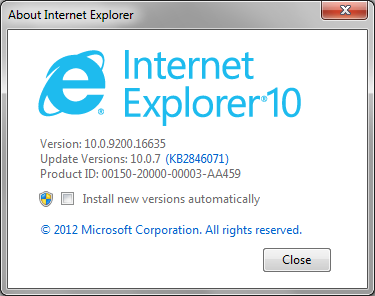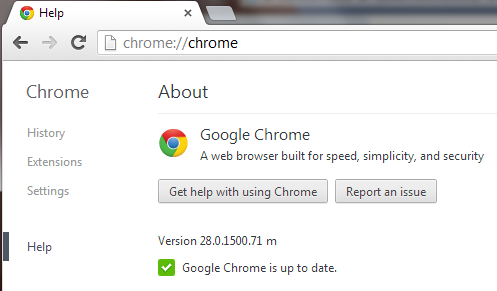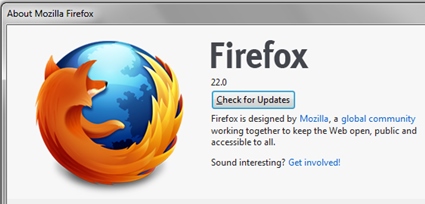
Remember the days when new versions of PC software came out about once a year, or perhaps (if you were VERY lucky) every six months? And new releases were given version numbers like 2.1.06?

Well, Google's entrance into the mainstream PC market with their Chrome web browser has radically changed that. Chrome first became available in 2008, and in the five years since then Google has released so many "new" versions of Chrome that they are already on version 28! Not 2.8, but 28. And very few (if any) of these new versions introduced substantially different or better functionality. Amazing.
Prior to Chrome's arrival on the now-crowded web browser scene, Mozilla Firefox was the main competitor for Microsoft's market-leading Internet Explorer. Mozilla also released regular versions of Firefox, but they had version numbers like 3.6.3, 3.6.4 and 3.6.5. More traditional and more sensible too - these new releases did not signal major rewrites or significant extra functionality but mostly included bug fixes, tighter security and minor improvements. But suddenly Chrome appeared, with Google shipping an entirely new version every second week (at least that's what it felt like), and it started to gain market share at the expense of both Firefox and Internet Explorer.
So what could Mozilla do? Simple really - start shipping new releases of Firefox just as often and increase the version number every time. And they proceeded to do just that from version 4 of Firefox onwards, to the extent that Firefox is now on version 22, not far behind Chrome's 28.


So far Microsoft has managed to resist getting into the "Version War" fairly well - Internet Explorer, the oldest browser of the three by a huge margin (believe it or not, IE first came out back in 1995) is still only on version 10.
There are a few other smaller players in this market, such as Opera and Netscape Navigator (yes, it is still around and still being used). Opera is currently on version 15 and is updated regularly. Navigator, older even than Internet Explorer, is no longer supported by AOL (which acquired Netscape in 1999) and the last stable release was version 9 in March 2008 ; however, it can still be downloaded from the AOL portal. Navigator once had over 90% of the browser market in the 1990's but its usage now is substantially less than 1%. How the once-mighty have fallen ...
I think the rate at which new versions of Chrome and Firefox are being released is indicative of the issues faced by browser developers:
- very smart hackers who will find and exploit the most obscure loophole;
- intense competition in a market that isn't growing like it did in the early days of the internet;
- users that are more savvy and expect more, more often, and are not prepared to wait long periods for new functionality.
These issues aren't going to disappear anytime soon, so expect to see this furious rate of release of new web browser versions continue unabated. And all of it is free, so sit back and enjoy!
[Update 1] By March 2016 the version numbers of Firefox and Chrome had marched on to 45 and 49 respectively.
[Update 2] ... and by August 2018 their version numbers were 61 and 68. Microsoft Edge, the replacement for Internet Explorer, was already on version 42.
 © Paul Kilfoil, Cape Town, South Africa
© Paul Kilfoil, Cape Town, South Africa